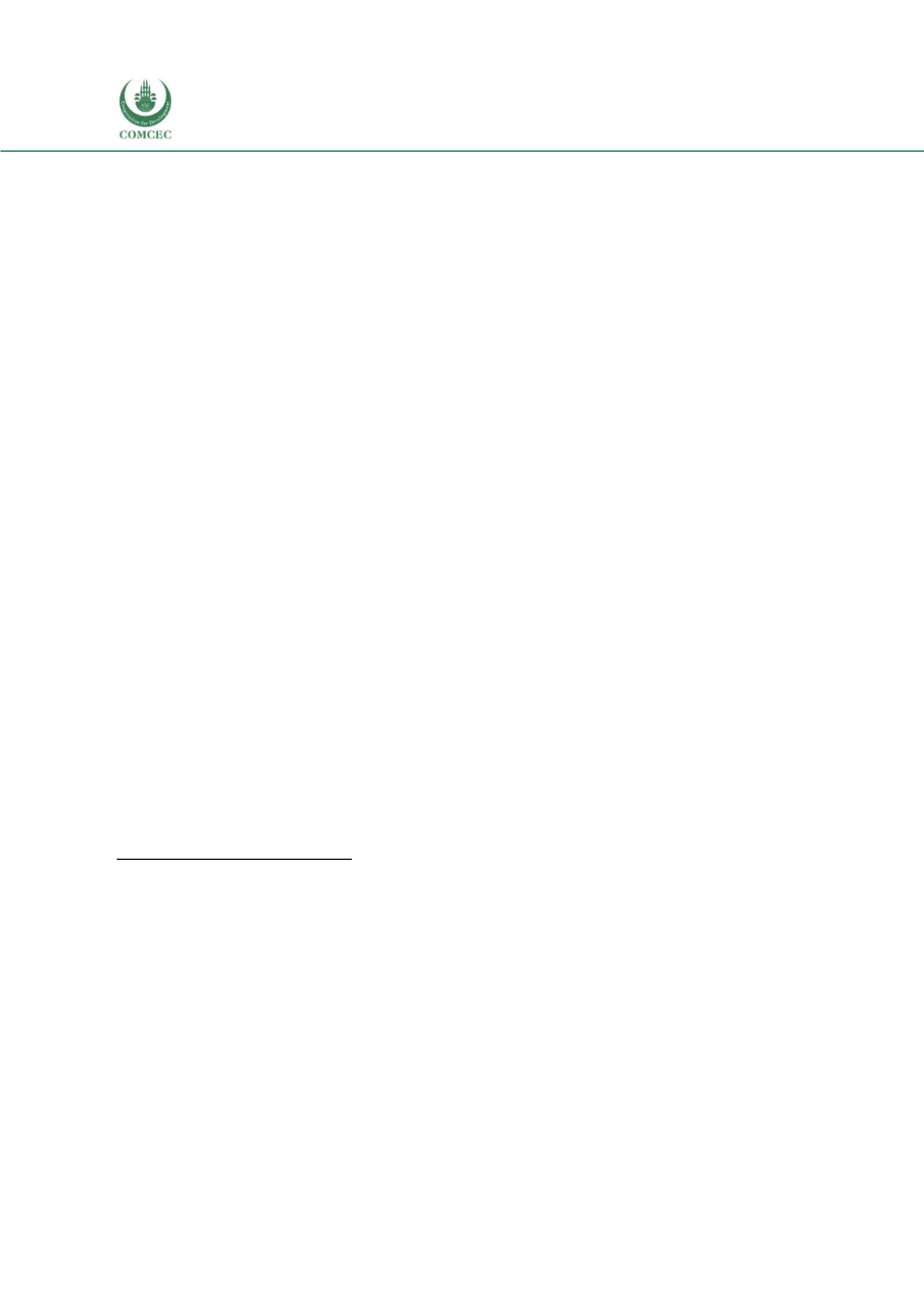

Increasing the Resilience of the Food Systems
In Islamic States in Face of Future Food Crises
84
Assessing Food Security Pillars in Niger
Niger's overall ranking in terms of food availability is weak (96th out of 113).
335
Two-thirds of
the country's total area is desert
336
while the irrigated area is scarce. In Niger, out of the 270,000
hectares of land that hold potential for irrigation, almost 37% is currently irrigated. Rain -fed
agriculture is contingent upon rainfall, and urban andrural areas alike are vulnerable to flooding
and droughts. Climatic shocks, weak food systems, and a growing population restrict the
availability of nutritious, diverse foods.
337
Food affordability ranks poorly in Niger. Its per capita daily food intake is amongst the lowest in
the world (2,547 kcal/capita/day).
338
An estimated 2.5 million
339
Nigeriens suffer chronic food
insecurity. Furthermore, millions are at risk for food insecurity and susceptible to transient food
crises. Over 60%
340
of household expenditures in Niger are food-related.
The government has formulated a response to widespread food insecurity that uses strategic
grain reserves to mitigate food crises. The Office of Agricultural Products of Niger (OPVN)—the
government body responsible for managing the country’s grain resources—also operatesmost
of the government warehouses. These warehouses follow the standards set by the World Food
Program (WFP); they host a total capacity of nearly 90,000 MT (metric tons), 65,000 MT of
which are reserved for the national food security stock. The remaining capacity is dedicated to
food storage byNGOs and UN agencies.
341
The National Food Reserve (SNR) can hold an optimal
capacity of 110,000 tons—50,000 MT of actual cereal stocks and purchasing power of an
additional 60,000 MT via a food security fund.
342
Poor food safety is a major driver of malnutrition in Niger. Constrained funding and inadequate
infrastructure impede food safety checks and systems. Malnutrition is further worsened by lack
of quality water, widespread open defecation, and poor food hygiene and food preparation
practices.
343
335
Global Food Security Index. Retrieved from:
https://foodsecurityindex.eiu.com/336
The Economist Intelligence Unit. (2018).
Global Food Security Index 2018 –BuildingResilience In The Face Of Rising Food-
Security Risks
. Retrieved from:
https://foodsecurityindex.eiu.com/337
Feed The Future. (2018).
Global Food Security Strategy (GFSS) Niger Country Plan
. Retrieved from:
https://www.usaid.gov/sites/default/files/documents/1867/Niger_Country_Plan_Final_Public_Scrub_Clean_WSEdits_8.13.pdf
338
Global Food Security Index. Retrieved from:
https://foodsecurityindex.eiu.com/339
TheWorld Bank. (2018).
Niger – Agricultural And Livestock TransformationProject
. Retrieved from:
http://documents.worldbank.org/curated/en/947021525731615260/pdf/Concept-Project-Information-Document-Integrated-Safeguards-Data-Sheet-NIGER-AGRICULTURAL-AND-LIVESTOCK-TRANSFORMATION-PROJECT-P164509.pdf
340
TheWorld Bank. (2013).
Agricultural Sector Risk Assessment In Niger: Moving from Crisis Response to Long-Term Risk
Management.
Retrieved from:
https
:/
/openknowledge.worldbank.org/bitstream/handle/10986/13260/743220ESW0P12900Box374318B00PUBLIC0.pdf341
FEWS NET. (2017).
Niger Staple Food and LivestockMarket Fundamentals
. Retrieved from:
http://fews.net/sites/default/files/documents/reports/FEWS%20NET%20Niger%20MFR_final_20170929.pdf342
Ibid
343
Feed The Future. (2018).
Global Food Security Strategy (GFSS) Niger Country Plan
. Retrieved from:
https://www.usaid.gov/sites/default/files/documents/1867/Niger_Country_Plan_Final_Public_Scrub_Clean_WSEdits_8.13.pdf
















